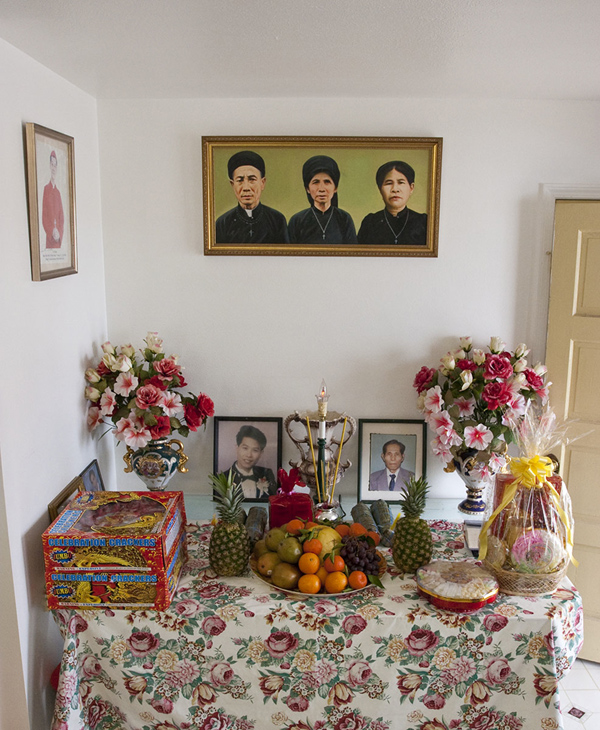Mark Sindler
Photographer Mark Sindler spent several years documenting Vietnamese and Laotian communities along the Gulf Coast in his "Vietnamese Documentary Project"

Courtesy of Mark Sindler
Altar for Vietnamese New Year. Sindler, Mark (artist)
Born in New York City in 1954, Mark Sindler came to New Orleans to study anthropology and journalism at Tulane University. After completing his degree, in 1978 he moved into the Versailles Gardens community in New Orleans East, a neighborhood where large numbers of refugees from the Vietnam War had resettled. It was there he began his Vietnamese Documentary Project.
With grants from the Louisiana State Arts Council and the National Endowment for the Arts, Sindler spent seven years photographing in Versailles Gardens, the single largest enclave of Vietnamese in the United States, and in other Vietnamese and Laotian communities along the Gulf Coast.
In his work, Sindler found himself frequently drawn to subjects that explored traditional culture and the process of change as the Vietnamese people adapted to their new environment. “Above all, I wanted to record traditional ways which might be lost as the Vietnamese adjusted to life in the United States,” he wrote. In his black-and-white photographs, he documented Vietnamese celebrations, costumes, religious ceremonies, and indigenous foodways. Other images, such as one of Vietnamese girls in traditional dresses competing in an American-style beauty pageant, speak to a blending of the two cultures.
Images from the more than fourteen thousand negatives Sindler shot for the project have been exhibited widely, most notably in a solo show at the Contemporary Arts Center in New Orleans, where he paired photographs with the artifacts seen in them. His pictures were also included in the Museum of Photographic Arts’ traveling exhibit, Points of Entry: The History of Immigration Through Photography.
Photographs from the Vietnamese Documentary Project are in the permanent collections of Louisiana State University, Jean Lafitte National Historical Park in New Orleans, the New Orleans Museum of Art, and Southeastern Louisiana University in Hammond.
Since 2005, Sindler has worked as chief photographer for the Louisiana State Museum, where he covers programs and activities of the education, exhibitions, and collections departments. His responsibilities include documenting contemporary life and culture for the museum’s archives, including the consequences of hurricanes Katrina (2005), Rita (2005), Gustav (2008), and Ike (2008), and the BP oil spill (2010).
Exhibition areas titled Routes, Mardi Gras, and Natural Resources at the Louisiana State Museum in Baton Rouge feature Sindler’s photographs. His images of the aftermath of Katrina and Rita were published in the collaboration Before, During, After: Louisiana Photographers’ Visual Reactions to Hurricane Katrina (2010). At present, he is working on a collection of music-related photographs to be displayed in a forthcoming exhibition on Louisiana’s musical heritage at the Old US Mint branch of the Louisiana State Museum.
Photographs Sindler produced for the museum have been published in magazines such as La Musee, Traditional Building, and Imagine: The Magazine of Louisiana Philanthropy. They have also appeared in a number of books: New Orleans: Life in an Epic City (2006); Katrina Exposed, a catalogue accompanying a 2006 exhibition by the same name at the New Orleans Museum of Art; New Orleans’ Favorite Shotguns, a photo project undertaken by the Preservation Resource Center of New Orleans in 2007; Stir It Up: The History of Cajun Cuisine (2005); and How to Rebuild a City (2010).
From 2003 to 2004, Sindler served as chief photographer for the Louisiana Office of Tourism, traveling throughout the state to document the natural and built landscape, cultural heritage, and living traditions. The images he made on these journeys were published in the Louisiana Tour Guide and in several magazines, including Louisiana Cultural Vistas, Louisiana Life, New Orleans Magazine, and American Heritage.
